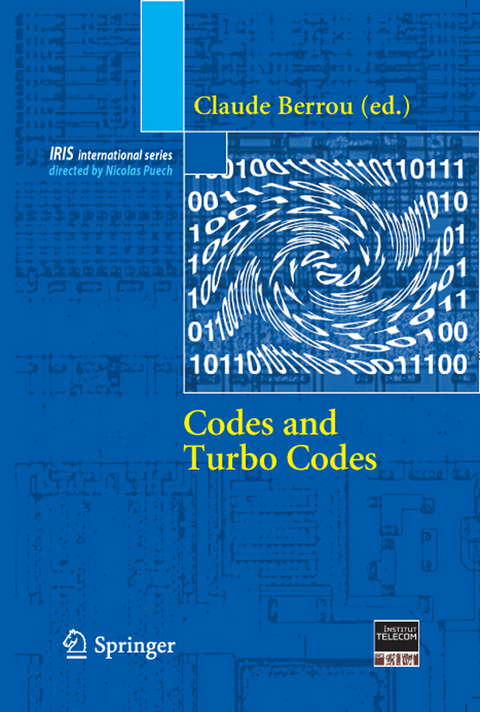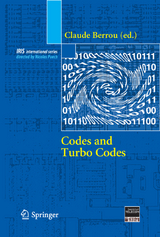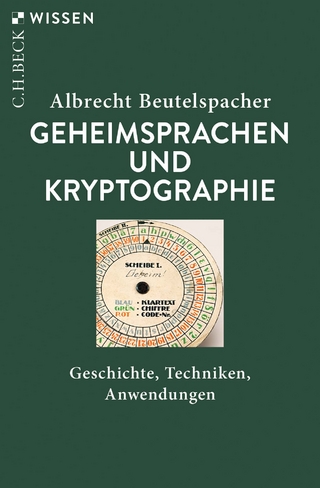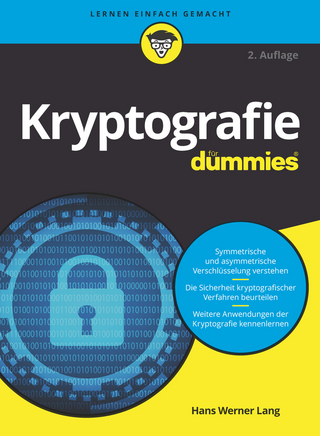Codes and turbo codes
Seiten
2010
Springer Editions (Verlag)
978-2-8178-0038-7 (ISBN)
Springer Editions (Verlag)
978-2-8178-0038-7 (ISBN)
This book is devoted to one of the essential functions of modern telecommunications systems: channel coding or error correction coding. Its main topic is iteratively decoded algebraic codes, convolutional codes and concatenated codes.
What is commonly called the information age began with a double big bang. It was 1948 and the United States of America was continuing to invest heavily in high-tech research, the ?rst advantages of which had been reaped during the Second World War. In the Bell Telephone Laboratories, set up in New Jersey, to the south of New York, several teams were set up around brilliant researchers, manyofwhomhadbeentrainedatMIT(MassachusettsInstituteofTechnology). Thatyeartwoexceptionaldiscoveriesweremade,onetechnologicalandtheother theoretical, which were to mark the 20th century. For, a few months apart, and in the same institution John Bardeen, Walter Brattain and William Shockley invented the transistor while Claude Elwood Shannon established information and digital communications theory. This phenomenal coincidence saw the birth ofnear-twins: thesemi-conductorcomponentwhich, accordingtoits conduction state (on or o?), is able to materially represent binary information ("0" or "1") andtheShannon orbit (shortforbinaryunit), a unit that measuresinformation capacity.
Today we can recognize the full importance of these two inventions that - abledthe tremendousexpansionofcomputing andtelecommunications,to name but these two. Since 1948, the meteoric progress of electronics, then of mic- electronics, has providedengineers and researchersin the world of telecommu- cations with a support for their innovations, in order to continually increase the performanceof their systems.
What is commonly called the information age began with a double big bang. It was 1948 and the United States of America was continuing to invest heavily in high-tech research, the ?rst advantages of which had been reaped during the Second World War. In the Bell Telephone Laboratories, set up in New Jersey, to the south of New York, several teams were set up around brilliant researchers, manyofwhomhadbeentrainedatMIT(MassachusettsInstituteofTechnology). Thatyeartwoexceptionaldiscoveriesweremade,onetechnologicalandtheother theoretical, which were to mark the 20th century. For, a few months apart, and in the same institution John Bardeen, Walter Brattain and William Shockley invented the transistor while Claude Elwood Shannon established information and digital communications theory. This phenomenal coincidence saw the birth ofnear-twins: thesemi-conductorcomponentwhich, accordingtoits conduction state (on or o?), is able to materially represent binary information ("0" or "1") andtheShannon orbit (shortforbinaryunit), a unit that measuresinformation capacity.
Today we can recognize the full importance of these two inventions that - abledthe tremendousexpansionofcomputing andtelecommunications,to name but these two. Since 1948, the meteoric progress of electronics, then of mic- electronics, has providedengineers and researchersin the world of telecommu- cations with a support for their innovations, in order to continually increase the performanceof their systems.
Digital communications.- Theoretical limits.- Block codes.- Convolutional codes and their decoding.- Concatenated codes.- Convolutional turbo codes.- Turbo product codes.- LDPC codes.- Turbo codes and large spectral efficiency transmissions.- The turbo principle applied to equalization and detection.
| Reihe/Serie | Collection IRIS |
|---|---|
| Zusatzinfo | 400 p. |
| Verlagsort | Paris |
| Sprache | englisch |
| Themenwelt | Informatik ► Theorie / Studium ► Kryptologie |
| Mathematik / Informatik ► Mathematik ► Angewandte Mathematik | |
| Technik ► Elektrotechnik / Energietechnik | |
| Technik ► Nachrichtentechnik | |
| Schlagworte | coding theory • Information Theory • Mobile telecommunications • Signal Processing • Telecommunications satellite • Turbocodes |
| ISBN-10 | 2-8178-0038-9 / 2817800389 |
| ISBN-13 | 978-2-8178-0038-7 / 9782817800387 |
| Zustand | Neuware |
| Haben Sie eine Frage zum Produkt? |
Mehr entdecken
aus dem Bereich
aus dem Bereich
Geschichte, Techniken, Anwendungen
Buch | Softcover (2022)
C.H.Beck (Verlag)
9,95 €




